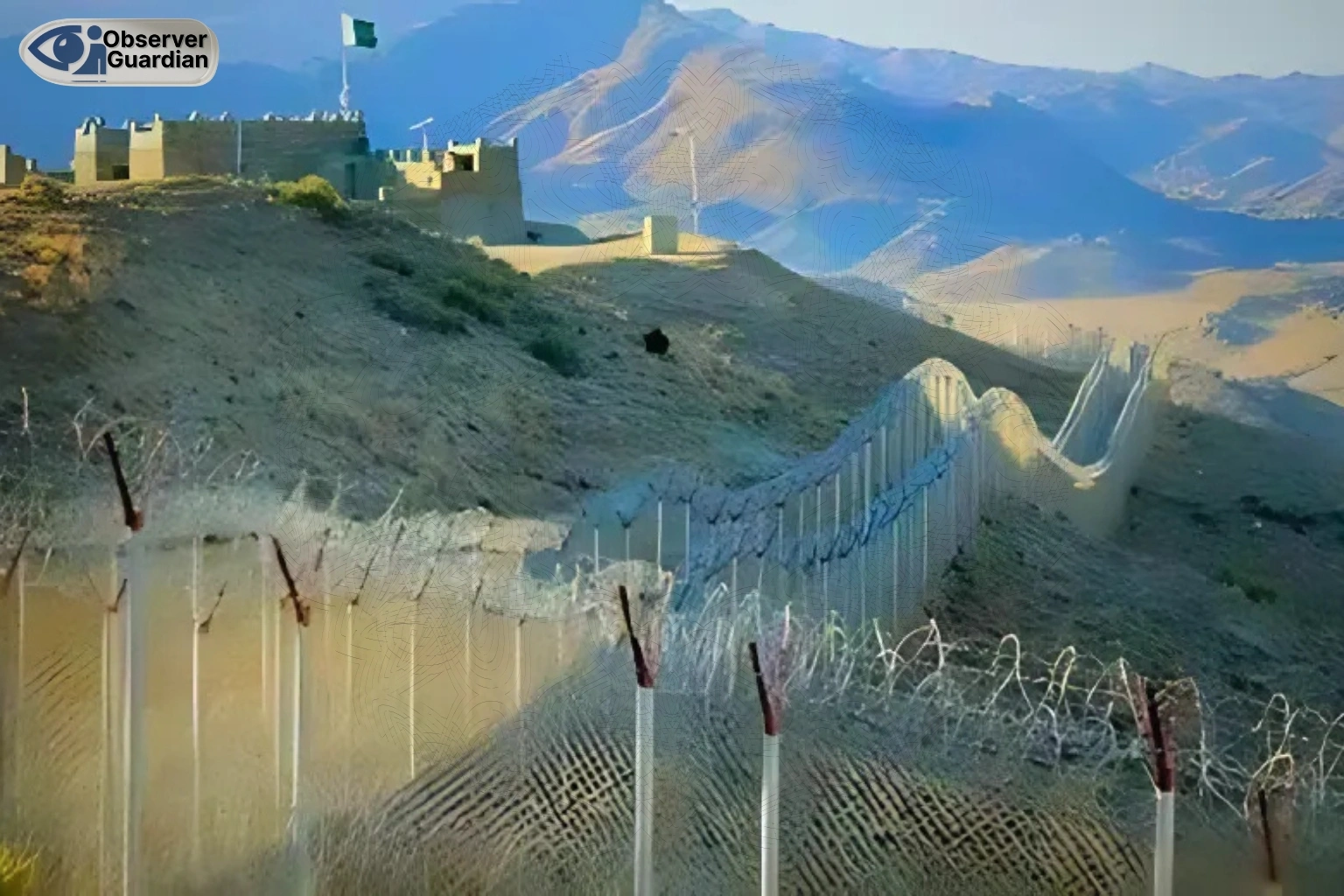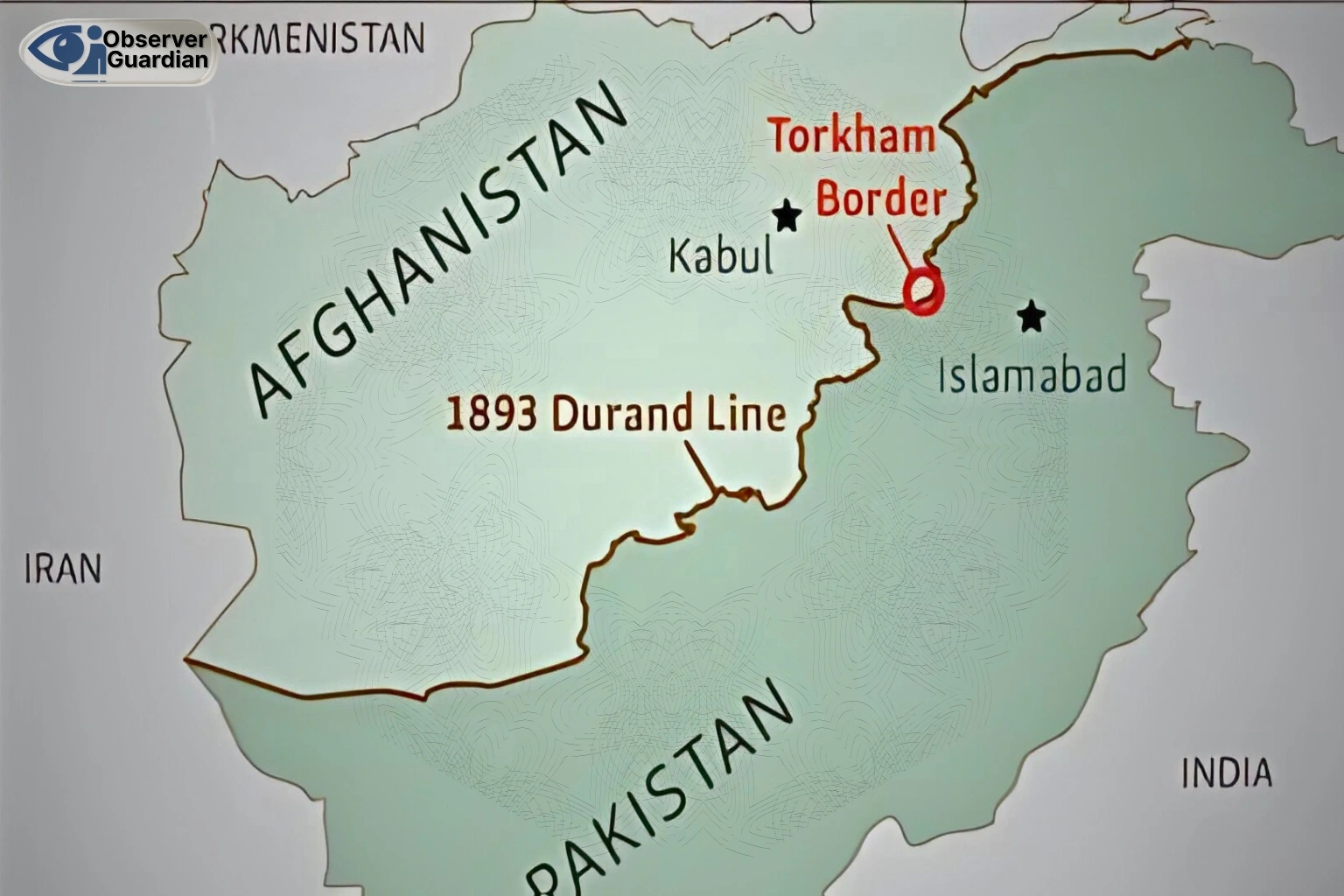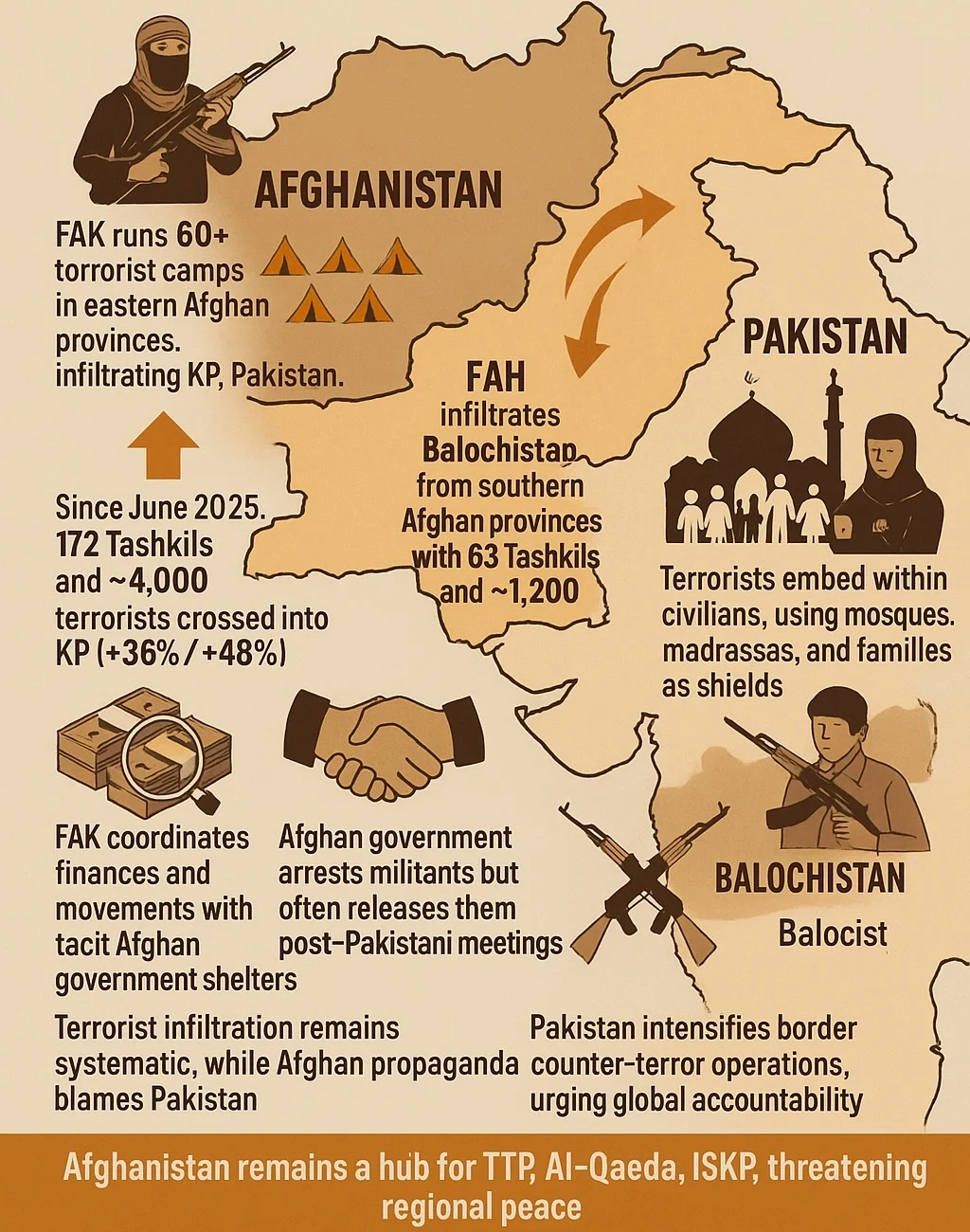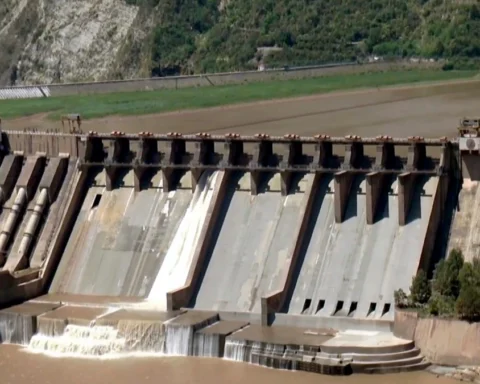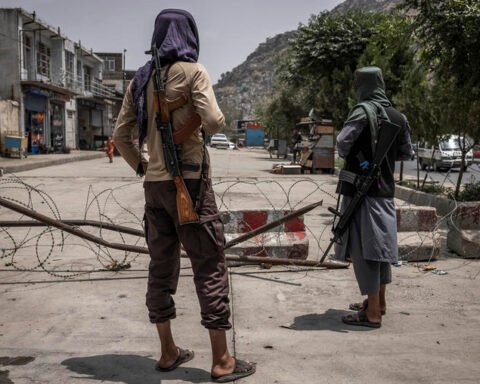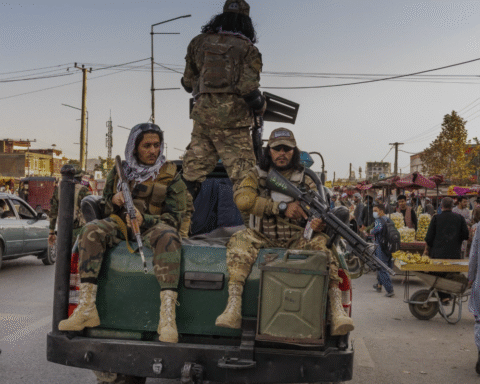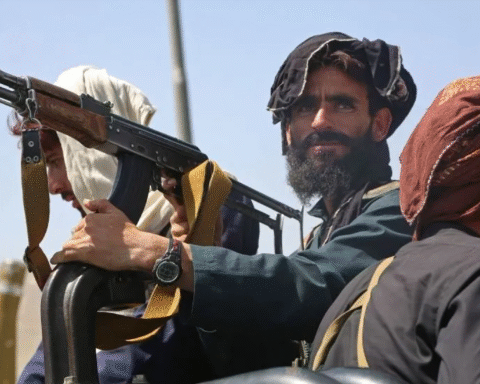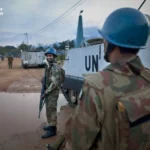Since the summer of 2025, Pakistan has been dealing with a steady stream of cross-border militant activity coming out of Afghanistan. Groups like Fitna al Khawarij (FAK) and Fitna al Hindustan (FAH) aren’t just small, scattered outfits anymore. In fact, they’re organized, dug in, and using Afghan territory as a launchpad into Khyber Pakhtunkhwa (KP) and Balochistan. What makes this worse is the way Kabul keeps brushing aside Pakistan’s concerns while militants keep slipping through the border.
Terror Networks Origin
FAK has a big footprint across eastern Afghanistan places like Nuristan, Kunar, Nangarhar, Paktiya, Khost, and Paktika. Notably, reports point to more than five dozen camps there. These aren’t just hideouts but also their training and staging grounds. Since June, Pakistan has tracked 172 Tashkils, which basically means organized infiltration cells, bringing close to 4,000 fighters into KP. That’s a sharp increase compared to earlier this year, and it shows how systematic the flow has become.
Moreover, down south, FAH has been busy channeling fighters into Balochistan. They’re moving through provinces like Zabul, Kandahar, Helmand, and Nimruz. Pakistani sources have counted 83 Tashkils and roughly 1,200 militants just in recent months. It’s not random. It looks coordinated, and it’s clearly designed to stretch Pakistan’s security forces on two fronts at once.
The propaganda against Pakistan
While fighters cross the border, the information war runs in parallel. A group calling itself Inqlab-e-Islami Pakistan (IIP) recently pushed out posters accusing Pakistan of killing civilians, even children, in airstrikes inside Afghanistan.
What those claims leave out is how militants deliberately put themselves in villages, madrassas, and mosques, often with families around, knowing full well that any strike there will create headlines they can exploit.
It’s a cruel tactic, and it shifts the narrative away from the real issue which is the fact that these groups operate freely from Afghan soil.
Kabul’s double act
There is, moreover, another layer of this. FAK leaders aren’t hiding in caves, rather, they hold meetings inside Afghanistan to plan finances and movement. Furthermore, evidence suggests the Interim Afghan Government (IAG) knows about it and, at the very least, looks the other way. Publicly, Afghan officials might detain a few militants and issue a condemnation, especially around the time of official visits and talks with Pakistan. However, once the spotlight fades, those same people are often released and back at work near the border. Indeed, it’s a pattern that has repeated too many times to be ignored.
This isn’t just Pakistan’s headache. Multiple UN reports and intelligence assessments from different countries keep confirming the same thing that Afghanistan is still a hub for international terrorism.
Groups like Al-Qaeda, ISKP, TTP, FAK, and FAH have space to train, regroup, and plan operations. For Pakistan, this means constant pressure along the border. For the wider region, it’s a serious threat to stability.
Pakistan’s response and restraint
Pakistan’s security forces are actively intercepting infiltration attempts and dismantling cells inside KP and Balochistan. But Islamabad hasn’t gone all-in on a military-first approach. Despite mounting attacks, Pakistan keeps calling for dialogue and cooperation. That patience is noteworthy given the circumstances.
The problem is that every time militants strike in Pakistan, and the trail leads back to Afghanistan, Kabul’s response is to deflect blame and accuse Pakistan of aggression. That narrative only protects the militants and delays any real solution.
Pakistan has been on the frontlines of terrorism for two decades and paid the highest price in lives lost. That’s why the international community needs to stop taking Afghan denials at face value. Groups like the UN Human Rights Council, Human Rights Watch, and Amnesty can’t just focus on isolated incidents without acknowledging the bigger pattern. If Afghanistan keeps acting as a haven for militant groups while also weaponizing propaganda, it risks sliding further into isolation.
The reality is plain. Afghan-based networks are still infiltrating Pakistan in organized waves, whether into KP through the east or into Balochistan through the south. The numbers back it up, and the propaganda surrounding it makes the problem even harder to tackle. Pakistan has shown restraint, but it can’t carry this burden alone. Unless Afghanistan clamps down on these camps and the international community steps in to apply real pressure, the cycle will continue, and the region will stay stuck in the shadow of instability.
Disclaimer: The views and opinions expressed in this article are exclusively those of the author and do not reflect the official stance, policies, or perspectives of the Platform.

